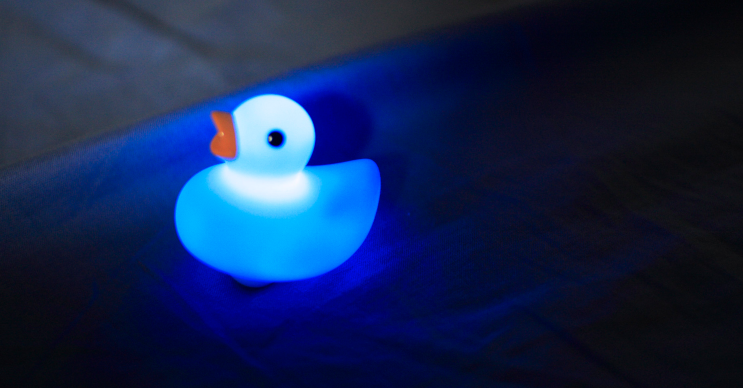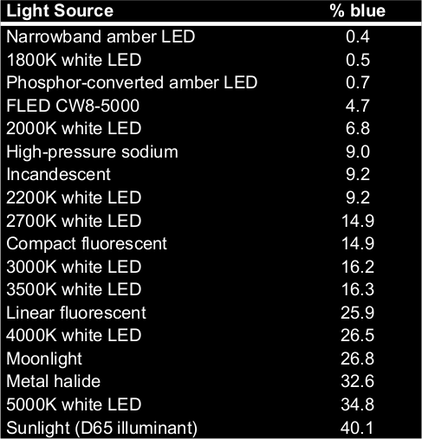Archives
June 2024
Categories
All
|
Back to Blog
Don't get the blues4/1/2022 Credit: Flickr/OiMax 742 words / 3 minute read Got a railroad ticket, As a musical genre, the origin of the blues is clear: it emerged from the the Deep South of the United States in around the 1860s. The source of its name refers to melancholy and sadness, the lyrical topics of many blues songs. According to the African American anti-slavery activist Charlotte Forten Grimké (1837-1914), blues songs "can't be sung without a full heart and a troubled spirit." There are lots of influences around us that may give us the blues. Short-wavelength, or "blue", light at night is one of them. Many modern light sources are blue-rich, which can lead to a host of problems. As light-emitting diode (LED) technology continues to displace earlier ways of making light at night, these problems become more common. How much blue?The amount of blue light a lamp or light source emits depends on many factors. We can compare sources by determining how much of their light they emit over some range we call "blue". For our purposes here, we define "blue" wavelengths to be in the range 380 to 520 nanometers. Using information about many common lamp types, we can arrange the sources according to what percentage of their light emissions fall within this range. Note that natural sources of light in the outdoor environment, such as the Sun and Moon, are remarkably blue. Because blue light scatters more in our atmosphere than other colors, our sky is blue during the day rather than some other color. Blues in the nightMuch of Earth's biology has evolved to expect lots of blue-rich light during the daytime and little or none of it at night. As a result, many species are very sensitive to blue light exposure at night. Consider, for example, that blue light exposure changes the balance of food webs in rivers and streams. In the lab, researchers find blue light stresses or even kills both human and primate cells. The effect that makes the sky blue during the daytime can make the nighttime glow of cities worse, especially at large distances. If one holds the light output of a city constant but shifts the colors of its lights toward the blue, the night sky over the city gets brighter. White LEDs replacing earlier sodium lamps can add up to 10-20% to skyglow. Blue light can also change how people perceive light on the ground. As lighting shifts toward more blue, it tends to cause more perceived glare that may, in turn, cause traffic safety problems. This is especially true for older drivers, as light scattering in the aging eye becomes important. How to kick the bluesDespite these concerns, it's not all bad news. People need blue light exposure at certain times of day to ensure good health. It helps maintain a healthy circadian rhythm and contributes to sleep quality. At night, there should be little blue light in our environments.
At night, a small amount of blue light supports seeing colors correctly and distinct from one another. This important for public safety as well as for the benefit of law enforcement. But, again, the blue light content of outdoor lighting should be kept low to avoid disadvantaging older drivers. It will also benefit nocturnal wildlife and improve our views of the stars. The solution is to give careful consideration to the spectrum of light and ask tough questions about whether blue is really necessary. If we don't need it, we shouldn't use it. In some cases, it makes the most sense to use light sources such as amber LED that emit very little blue light. In other instances, lighting isn't necessary in the first place. Alternatives such as reflective tape or self-luminous paint can help with wayfinding and mark the presence of obstacles. Lastly, keep in mind that the potential harm associated with lighting is a function of many variables, not color alone. We should give equal consideration to the duration of lighting as well as its intensity. Choose dimmer lamps when possible, and match light levels to needs. Timers and motion-sensing switches can effectively reduce blue light emission by simply limiting the time that lighting is switched on. With some mindful thinking about outdoor lighting, we too can cast our blues aside. Contact us today to find out how we can help.
0 Comments
Read More
Your comment will be posted after it is approved.
Leave a Reply. |
 RSS Feed
RSS Feed


